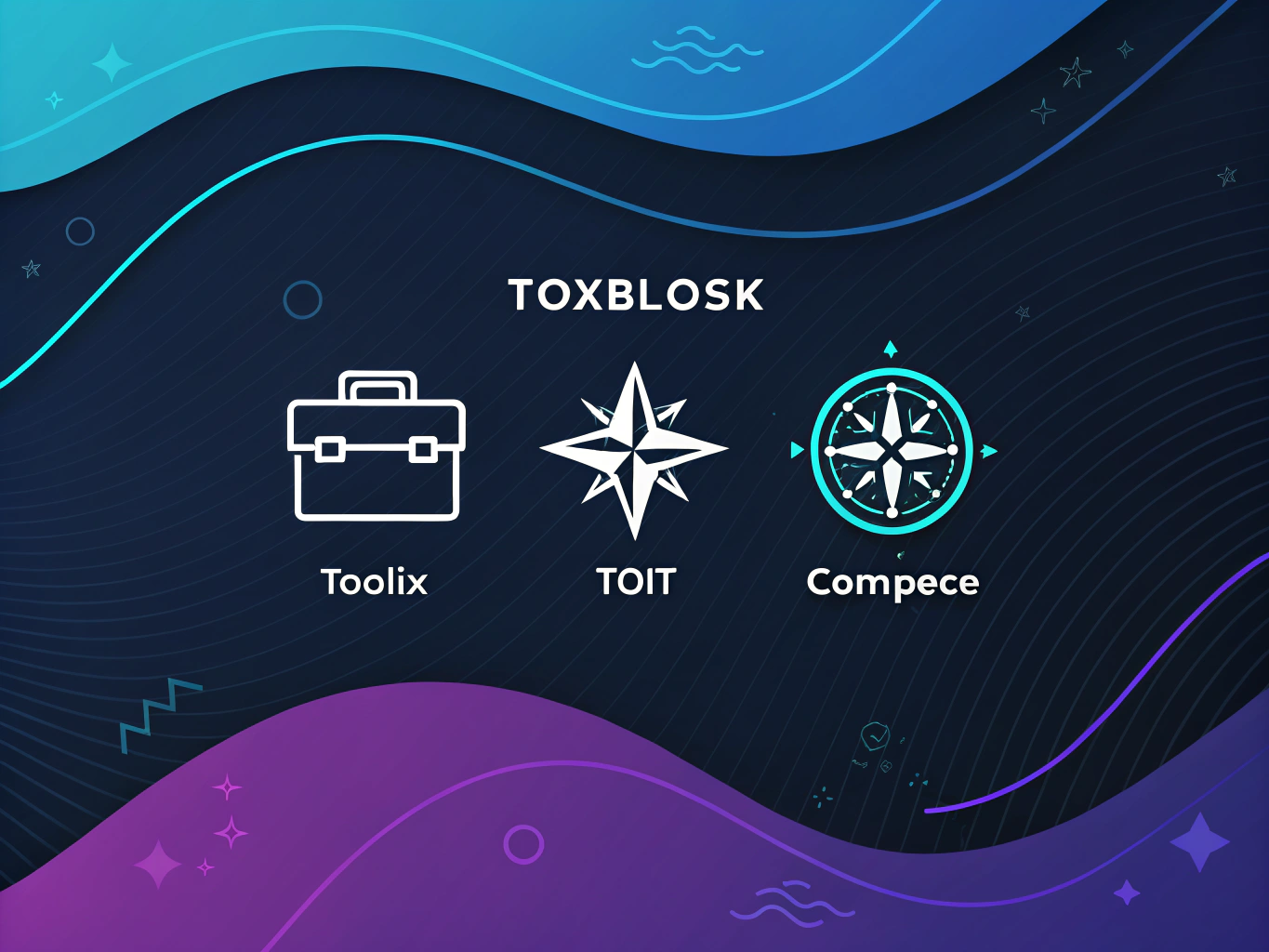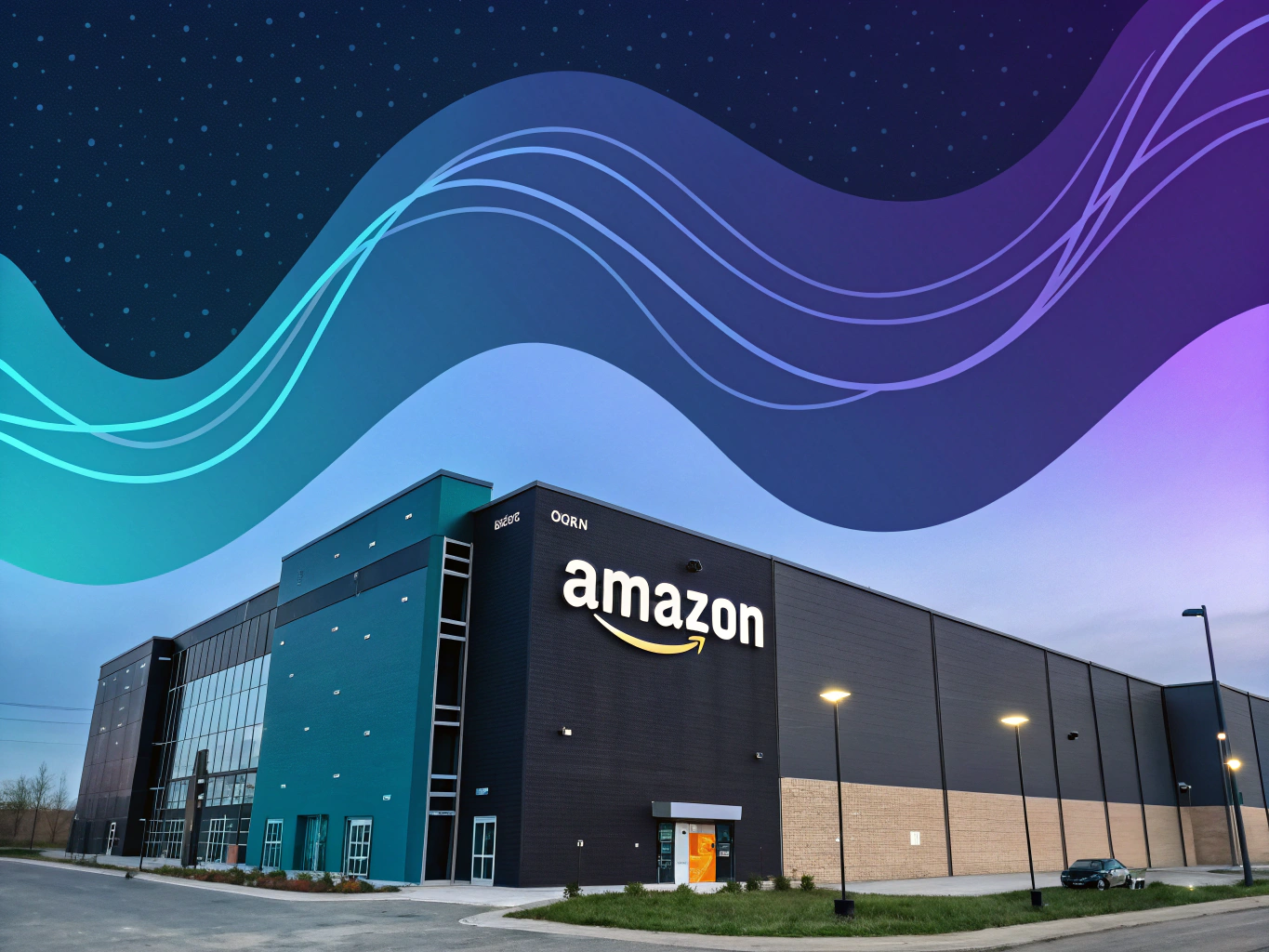Let’s face it – Amazon isn’t just another marketplace. It’s the digital equivalent of prime real estate on Fifth Avenue, except instead of window shopping, millions of customers are scrolling through product listings with their credit cards ready. And here’s the thing: while everyone’s fighting over keywords and sponsored rankings, there’s this somewhat overlooked goldmine called Amazon Storefronts.

Think of an Amazon Storefront as your own digital boutique within the world’s largest shopping mall. It’s where you get to break free from the constraints of standard product listings and create an immersive brand experience. But like any worthwhile venture, it requires more than just clicking a few buttons and hoping for the best.
Understanding Amazon Storefronts: More Than Just Another Sales Channel
I’ve helped dozens of brands set up their Amazon presence, and the first question I always get is, “What makes a storefront different from regular Amazon listings?” Here’s the deal: an Amazon storefront is your branded space within Amazon’s ecosystem. It’s like having your own mini-website where you control the narrative, showcase your product line, and build brand loyalty – all while leveraging Amazon’s massive customer base.
The stats don’t lie. Brands with well-designed storefronts see an average increase of 35% in sales compared to those selling through standard listings alone. But what really gets me excited is how storefronts level the playing field between established brands and newcomers. You don’t need a million-dollar marketing budget to create an engaging shopping experience anymore.
The Real Benefits Nobody Talks About
Sure, everyone mentions increased visibility and brand control, but let’s dig deeper into the benefits that actually matter:
- Customer Trust Amplification: When shoppers land on your storefront, they’re not just seeing products – they’re experiencing your brand story. This builds trust faster than any product description ever could.
- Data Insights Gold Mine: Storefronts give you access to analytics that help you understand customer behavior in ways regular listings can’t. It’s like having a focus group running 24/7.
- Cross-Selling Paradise: The ability to showcase complementary products and collections means higher average order values. I’ve seen brands increase their AOV by up to 40% just through smart storefront organization.
Getting Started: The Prerequisites You Actually Need

Before you dive into creating your storefront, let’s talk about what you really need to get started. And no, you don’t need to be a tech wizard or have a massive inventory (though both can help).
Legal Requirements: The Foundation of Your Amazon Empire
First things first – the legal stuff. Yes, it’s about as exciting as watching paint dry, but it’s crucial to get right. You’ll need:
- A registered business entity (LLC, Corporation, or Sole Proprietorship)
- An EIN (Employer Identification Number) from the IRS
- State and local business licenses (requirements vary by location)
- Sales tax permits (especially important with marketplace facilitator laws)
Brand Registry: Your Ticket to the Show
Here’s where things get interesting. Amazon Brand Registry is your gateway to creating a storefront, and it’s non-negotiable. But don’t let that scare you – the process is actually pretty straightforward if you know what you’re doing.
To qualify for Brand Registry, you’ll need:
- A registered trademark (US Patent and Trademark Office for US sellers)
- Images of your brand logo
- Product images with visible branding
- A list of product categories where you sell
Pro tip: Don’t wait until your trademark is registered to start planning your storefront. The registration process can take 4-6 months, but you can use this time to develop your brand strategy and prepare your content.
Setting Up Your Amazon Seller Account: The Smart Way
Let’s talk about choosing between Individual and Professional selling plans. Here’s the truth: if you’re serious about creating a storefront, go Professional. Yes, it’s $39.99/month versus no monthly fee for Individual, but the Professional plan gives you access to crucial tools and features you’ll need for a successful storefront.
Account Creation: Beyond the Basics
When setting up your seller account, you’ll need:
- A business email address (avoid using personal emails)
- A chargeable credit card
- Valid government ID
- Tax information
- Phone number for verification
- Bank account information for payments
Here’s something most guides won’t tell you: Amazon’s verification process can be surprisingly thorough. They might ask for additional documentation, especially if you’re selling in certain categories. Keep digital copies of all your business documents handy – it’ll save you headaches later. For more guidance on creating engaging content, explore paragraph generator tools.
Remember, your Amazon storefront isn’t just another sales channel – it’s potentially your most powerful brand asset on the world’s largest marketplace. Take the time to get these foundational elements right, and you’ll be setting yourself up for long-term success. Check out more on Amazon Print on Demand to expand your product offerings.
Setting Up Your Amazon Seller Account: The Foundation of Your Storefront

Let’s talk about something that keeps many aspiring entrepreneurs up at night – getting started on Amazon. It’s like being handed the keys to a Ferrari when you’ve only driven a Prius. Exciting? Absolutely. A bit intimidating? You bet. Learn how to start an Amazon store with confidence.
I’ve helped hundreds of brands navigate this process, and here’s what I’ve learned: most people overthink it. They get caught up in analysis paralysis, worried about making the “perfect” choice between account types. But here’s the thing – perfect is the enemy of done.
Individual vs. Professional: Making the Smart Choice
Think of the Individual selling plan as your starter home – it’s perfect if you’re testing the waters and expect to sell fewer than 40 items monthly. At $0.99 per sale plus fees, it’s a low-risk entry point. But here’s the catch – you’ll miss out on crucial tools like bulk listing and advanced analytics.
The Professional plan ($39.99/month) is more like moving into a fully-equipped office space. You get access to the API, can create promotions, and most importantly – you can build that gorgeous Amazon storefront we’re all here to talk about. Plus, if you’re selling more than 40 items monthly, the math works in your favor.
Building Your Amazon Storefront That Converts
Now for the fun part – creating a storefront that doesn’t just look pretty but actually converts. I’ve seen too many brands treat their Amazon storefront like a digital brochure. Spoiler alert: that approach doesn’t work.
Store Design Fundamentals: More Than Just Pretty Pictures
Your storefront is like your digital real estate on the world’s largest marketplace. The layout should tell a story – your brand’s story. Start with a clean, mobile-first design (over 70% of Amazon shoppers browse on mobile), and please, for the love of conversion rates, test your navigation on a phone before going live.
Here’s a pro tip that most guides won’t tell you: the best-performing storefronts often break traditional design rules. I’ve seen brands use asymmetrical layouts and bold, unconventional color schemes outperform “safe” designs by 2-3x in conversion rates. Consider checking out Amazon Hub Counter for effective delivery solutions.
Content Creation That Sells
Listen, I get it – creating content for your Amazon storefront can feel like trying to write a novel in tweets. But here’s what actually works:
- Product photography that shows scale and context (stop with the white background only shots)
- Copy that addresses objections before they arise
- A+ Content that doesn’t look like it was designed in 1999
- Video content that actually demonstrates value (not just features)
Product Strategy: The Heart of Your Storefront

Your product strategy isn’t just about what you sell – it’s about how you position yourself in Amazon’s ecosystem. Think of it like playing chess while everyone else is playing checkers.
Market Research That Actually Matters
Forget those basic “look at BSR” tutorials. Real market research on Amazon is about understanding the ecosystem. Use tools like Helium 10 or Jungle Scout, sure, but also dive into customer reviews of competitor products. That’s where the gold is – unfiltered feedback about what’s missing in the market.
Here’s a secret weapon: look for products where customers are consistently mentioning the same problems in 3-star reviews. These are your opportunities to create better solutions. Dive deeper into comparisons with Temu vs. Shein for additional insights.
Inventory Management: The Make-or-Break Factor
The eternal question: FBA or FBM? The answer isn’t as simple as most guides make it seem. FBA gives you that Prime badge (which, let’s be honest, is like having a VIP pass at a club), but it comes with its own headaches – storage fees, prep requirements, and the occasional “lost” inventory.
I recommend a hybrid approach for most sellers: use FBA for your best-sellers and fast-moving inventory, keep FBM as a backup for everything else. This way, you’re never completely out of stock, even during Amazon’s infamous inventory restrictions. For more on how to handle inventory, explore Walmart Creator options.
Marketing Your Amazon Storefront

Marketing on Amazon is like trying to be heard at a rock concert – you need to be loud, but in the right way. Most sellers throw money at PPC and pray. There’s a better way.
Amazon Advertising: Beyond Basic PPC
Start with Sponsored Products, sure, but don’t stop there. Sponsored Brands (especially video) are criminally underutilized. I’ve seen brands achieve 30% lower ACoS using video ads compared to static images.
The real secret sauce? Defensive advertising. Bid on your own brand terms aggressively. Yes, it seems counterintuitive to pay for clicks on your own brand, but it’s cheaper than letting competitors steal your traffic. Explore more on advertising strategies with Amazon Merch on Demand.
External Traffic: The Multiplier Effect
Amazon loves external traffic – it’s like bringing your own party to their venue. But here’s what most guides get wrong: it’s not just about driving any traffic. It’s about driving the right traffic.
Focus on platforms where your target audience already hangs out. If you’re selling fitness products, TikTok might be your goldmine. Selling professional tools? LinkedIn could be your secret weapon. For a comprehensive guide, see how to sell on Amazon.
Remember, Amazon’s algorithm rewards external traffic that converts. A small stream of highly targeted traffic often outperforms a flood of random visitors. For more strategies, check how to login as an Etsy seller and increase your reach.
The key to success isn’t just following these steps mechanically – it’s understanding the why behind each one and adapting them to your unique situation. Your Amazon storefront isn’t just another sales channel; it’s an extension of your brand’s story.
Marketing Your Amazon Storefront
Let’s talk about the elephant in the room – marketing. You’ve built this beautiful storefront, but without proper promotion, it’s like throwing a party and forgetting to send out invitations. Trust me, I’ve been there. And while Amazon’s internal traffic is fantastic, you’ll need more than that to really make your storefront sing.
Amazon Advertising: Your Secret Weapon
Here’s something most guides won’t tell you: Amazon’s advertising platform is actually pretty forgiving to newcomers. Start with Sponsored Products campaigns – they’re like training wheels for Amazon advertising. Set a daily budget of $20-30, target automatic placements initially, and let Amazon’s algorithm do the heavy lifting while you learn the ropes.
But here’s where it gets interesting: Sponsored Brands campaigns. These bad boys let you showcase your storefront directly in search results. Think of them as your storefront’s billboard on Amazon’s digital highway. I’ve seen brands increase their storefront traffic by 300% just by running well-optimized Sponsored Brands campaigns. Learn how to boost your sales with Everbee on Etsy.
External Marketing: Breaking Free from Amazon’s Walls
Amazon’s great and all, but limiting yourself to their ecosystem is like only eating at one restaurant for the rest of your life. Sure, the food might be good, but you’re missing out on so much more. This is where external marketing comes in.
Social media isn’t just for dance challenges and cat videos (though those are great too). Use platforms like Instagram and TikTok to showcase your products in action. Create behind-the-scenes content about your brand. And yes, you can absolutely link to your Amazon storefront from these platforms – just make sure you’re following each platform’s guidelines. For more tips, see how to find Shopify stores effectively.
Analytics and Optimization: The Science Behind the Success
Remember when I said AI is like an intern? Well, Amazon’s analytics tools are like having a whole team of data scientist interns working 24/7. They’ll tell you everything from how many people visited your storefront to which products they clicked on – and more importantly, which ones they actually bought.
Key Performance Indicators That Actually Matter
Look, you could drown yourself in metrics, but here are the ones that really count:
– Conversion rate (anything above 3% is solid)
– Average order value
– Traffic sources (where are your customers coming from?)
– Time spent on storefront (longer isn’t always better)
Customer Feedback: The Good, The Bad, and The Ugly
Reviews aren’t just vanity metrics – they’re gold mines of customer insight. But here’s the trick: don’t just focus on the star rating. Pay attention to the actual words customers use. They’re literally telling you what they love (or hate) about your products. Use this feedback to improve your listings and storefront content. Discover more by learning how to create a TikTok shop and engage your audience.
Future-Proofing Your Amazon Storefront
The ecommerce landscape changes faster than my coffee gets cold (and I drink it pretty quick). What works today might not work tomorrow, so you need to stay ahead of the curve.
Emerging Trends Worth Your Attention
Voice commerce isn’t just coming – it’s here. Make sure your product titles and descriptions are optimized for voice search. And don’t get me started on AR/VR shopping experiences – Amazon’s already testing features that let customers visualize products in their space. If you’re not thinking about how to incorporate these technologies into your storefront strategy, you’re already falling behind. Check why TikTok Shop is so cheap for more insights.
Long-term Strategy: Playing the Long Game
Your storefront isn’t just a digital catalog – it’s the foundation of your brand’s future on Amazon. Think about where ecommerce will be in 5 years. Will customers still shop the same way? Probably not. That’s why flexibility needs to be built into your storefront strategy from day one.
Consider these long-term moves:
– Build a brand that transcends Amazon
– Develop a multi-channel presence
– Invest in customer relationships, not just transactions
– Stay educated about emerging technologies. Additionally, review how to see sold items on eBay for competitive insights.
Final Thoughts on Your Amazon Storefront Journey
Starting an Amazon storefront isn’t just about following a checklist – it’s about creating a living, breathing extension of your brand in the world’s largest marketplace. It’s about understanding that success doesn’t happen overnight, but with the right strategy, tools, and mindset, it’s absolutely achievable.
Remember: your storefront is more than just a digital shelf space. It’s your opportunity to tell your brand’s story, connect with customers, and build something that lasts. And while the technical aspects are important, it’s the human element – your unique vision and approach – that will ultimately set you apart. Explore how to make someone skinnier in a photo for creative content ideas.
The beauty of an Amazon storefront is that it’s never really “finished.” It’s an ongoing experiment, a constant evolution. Keep testing, keep learning, and most importantly, keep focusing on what matters most: creating value for your customers. Also, learn how much Shopify stores make for financial planning.
Now go forth and create something amazing. Your future customers are waiting.
👉👉 Create Photos, Videos & Optimized Content in minutes 👈👈
Related Articles:
- Amazon Influencer Program Eligibility Guide for 2024
- Amazon Search Engine Marketing: What You Need to Know
- Amazon Print on Demand: A Beginner’s Guide to Success
- How Much Does the Average Shopify Store Make per Month: What to Really Expect
Frequently Asked Questions
How to start an amazon storefront?
To start an Amazon storefront, first create an Amazon Seller account by visiting the Amazon Seller Central website and following the registration process. After setting up your account, navigate to the ‘Create a Store’ section and use the Amazon Stores builder to design and customize your storefront with your brand’s products and content. Once your store is ready, submit it for review by Amazon.
How to start an amazon storefront as an influencer?
To start an Amazon storefront as an influencer, apply to the Amazon Influencer Program by linking your social media accounts on the Amazon Influencer Program page. Once approved, you can create your storefront by selecting products you recommend, organizing them into lists, and customizing the layout to reflect your personal brand. Your storefront will allow followers to easily find and purchase products you endorse.
How to start an amazon storefront for free?
Starting an Amazon storefront for free is possible through the Amazon Influencer Program, which does not require upfront fees. After applying and getting approved based on your social media influence, you can create a storefront and showcase products you love. This program allows you to earn commissions on sales made through your storefront without any initial cost.
How to start an amazon influencer storefront?
To start an Amazon Influencer storefront, apply to the Amazon Influencer Program with your social media profiles to demonstrate your online presence. Once approved, you can set up your storefront by selecting and curating products you wish to recommend, organizing them into collections, and personalizing your page. This storefront helps you monetize your influence by earning commissions on product sales.
How to start an amazon storefront influencer?
Starting an Amazon storefront as an influencer involves applying to the Amazon Influencer Program, which evaluates your social media reach and engagement. After approval, you can create a personalized storefront where you can feature and recommend products to your audience. This storefront serves as a platform to connect with followers and earn commissions from purchases made through your curated selections.
About the Author
Vijay Jacob is the founder and chief contributing writer for ProductScope AI focused on storytelling in AI and tech. You can follow him on X and LinkedIn, and ProductScope AI on X and on LinkedIn.
We’re also building a powerful AI Studio for Brands & Creators to sell smarter and faster with AI. With PS Studio you can generate AI Images, AI Videos, Chat and Automate repeat writing with AI Agents that can produce content in your voice and tone all in one place. If you sell on Amazon you can even optimize your Amazon Product Listings or get unique customer insights with PS Optimize.
🎁 Limited time Bonus: I put together an exclusive welcome gift called the “Formula,” which includes all of my free checklists (from SEO to Image Design to content creation at scale), including the top AI agents, and ways to scale your brand & content strategy today. Sign up free to get 200 PS Studio credits on us, and as a bonus, you will receive the “formula” via email as a thank you for your time.
